More than 970 exhibitors--twice as many as the 2000 show--displayed the latest photonics gear. The exhibit hall was filled with academics and entrepreneurs from around the world, along with throngs of venture capitalists, investment bankers and Wall Street analysts. Everyone was searching for the hottest products and the next breakthrough technology, such as tunable lasers, all-optical switching components, Raman amplifiers, dense wavelength division multiplexing (DWDM) systems and devices capable of 40-gigabits-per-second transmission speeds.
Bellwether companies such as Corning Inc., JDS Uniphase Corp. and Nortel Networks Corp. held court in massive booths that attracted thousands of visitors eager to view next-generation optical components. JDS Uniphase (San Jose, CA) alone unveiled 70 new products in Anaheim. But, several weeks after the OFC show, the company announced that it was cutting 5,000 manufacturing jobs or 20 percent of its workforce. As part of a "global realignment program," JDS Uniphase is shifting a large chunk of its production to China to take advantage of a "favorable cost and tax environment," which includes much lower wages for its labor-intensive assembly processes.
In spite of general economic uncertainty, many observers remain bullish on the fiber optics industry. During a special briefing before the OFC show opened, Gerald Fine, executive vice president and general manager of Corning Photonic Technologies (Corning, NY), predicted the worldwide fiber optic components market will grow 10 to 30 percent this year, compared with more than 50 percent in 2000. That news sent the room full of analysts scurrying for their cell phones and laptops.
"The slower growth rate this year reflects softening economic conditions in a number of important regions globally," said Fine. However, he believes demand for photonic devices will remain strong during the next few years, with a compound annual growth rate of 50 percent between now and 2004. "Bandwidth demand will continue to increase more than 100 percent per year for the next 10 years," Fine predicted. "In 2010, demand will be more than 1,000 percent of what it is today."
Big crowds hovered around the displays of the handful of companies that promised solutions to the production bottlenecks that have plagued optical component manufacturers. Some vendors claimed to have products capable of improving time to market and time to volume. Others showcased tools to improve yield, reduce floor space, maximize uptime or increase quality.
The photonics industry is ripe for automated tools that enable companies to manufacture at high volumes. The universal goal is to speed up production ramps, improve throughput and drive down component costs. Packaging and fiber handling are the principal cost drivers in the manufacture of optical components. Assemblers are hungry for tools to automate manual processes, such as fiber alignment, preparation and positioning.
The OFC show attracted a number of first-time exhibitors, including both established assembly automation companies and startups with fresh ideas and outside-the-box thinking. Some vendors featured technology previously developed for other industries with similar nanoassembly requirements, such as semiconductors, disk drives, cell phones and medical devices. Other exhibitors touted products so new that all they had to show at their booth was a conceptual drawing, video presentation or computer-simulation.
Products on display ranged from motion control devices and laser welding equipment to adhesive dispensing and curing devices to test and inspection systems. These pages provide a brief glimpse of some of the automated assembly products unveiled in Anaheim.
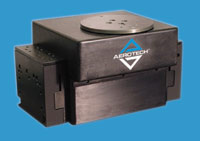
Fiber Positioning Stage
FiberMax is a small, high-performance multi-axis nanopositioning stage system. It features up to six axes controlled by patented noncontact, direct-drive technology for high-speed positioning and improved throughput. The compact device is capable of 10 nanometer resolution in the X and Z axes and 2 nanometer resolution in the Y axis. A flexible machine vision toolkit provides quick and accurate alignment of components for first light.
For more information about nanopositioning stages, call Aerotech Inc. at 412-967-6854, visit www.aerotech.com or reply 25.
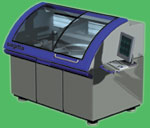
Optical Polishing System
Gemini-Pi polishes multiple parts at the same time and can be quickly set up to process, in a single production shift, various fiber optic components, including planar light circuits, v-groove arrays, fiber tips and capillaries. It allows variable configurations of up to three 12-inch polishing disks and up to three noncontact ultrasonic cleaning stations. The system is integrated with an advanced image processing station for automated optical inspection, as well as statistical process control software for quality control.For more information about multistation polishing systems, call Sagitta Ltd. at 408-394-9000, visit www.sagitta.com or reply 26.
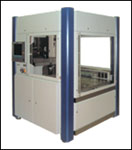
Assembly Cell
NanoCell is a pre-engineered fiber optic assembly platform that serves as a customizable building block to help slash time to volume. It can be configured with mechanical, network and electrical connections to support multiple NanoLine stages and process modules, each served by a material handling robot. Typical applications include laser welding, fiber stripping, fiber cleaving and fusion splicing. The platform is available in a wide range of sizes, with a 100 by 100 (M8) grid pattern for mounting process modules.
For more information about fiber optic assembly platforms, call Adept Technology Inc. at 408-432-0888, visit www.adept.com or reply 27.
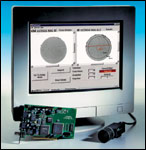
Inspection System
FiberInspect is a machine vision system that automatically detects and measures scratches, cracks and spots on fibers that form during the polishing process. Proprietary software algorithms can detect fiber end defects smaller than 1 micron. The Windows-based system analyzes an image of a polished fiber end, graphically highlights each defect, and provides data about the position and size of each.
For more information about machine vision, call Cognex Corp. at 508-650-3000, visit www.cognex.com or reply 28.
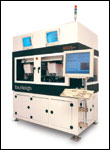
Pick-and-Place Platform
The VectorPlace platform is a fully automated device that uses as many as four manipulator robots to assemble fiber optic components with submicron accuracy. The programmable, flexible workstation lends itself to a number of fully automated fiber optic manufacturing applications where high volume, a high level of mechanical accuracy and a high level of repeatability are important.
For more information about pick-and-place platforms, call Burleigh Automation Inc. at 418-683-0211, visit www.burleigh.com or reply 29.
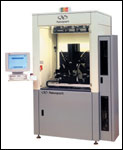
Automated Laser Welding
AutoWeld is a fully automated laser welding assembly platform for fiber optic components. It features completely integrated material handling systems, vision-guided and FastAlign alignment technology, proprietary tooling and fixturing platforms, and advanced laser welding process technology. The machine is available in two versions: the 4000 Series, which incorporate a three-beam welding geometry for external pigtailing applications, and the 4200 Series for two-beam welding applications, such as 980 pump and DFB laser assembly.
For more information about automated laser welding, call Newport Corp. at 949-863-3144, visit www.newport.com or reply 30.
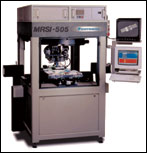
Optical Assembly Workcell
The 505 Photonics Optical Assembly Work Cell can be configured for several component-attach technologies, such as epoxy die attach, eutectic bonding and flip-chip bonding. It features ±0.0005-inch (12.5 microns) or better placement accuracy. The major system axes use brushless DC linear servomotors with linear glass-scale encoder feedback. A 700-square-inch work area holds required inputs and outputs. The machine holds up to 75 2-inch waffle packs, plus a conveyor system.
For more information about optical assembly workcells, call MRSI Group at 978-667-9449, visit www.mrsigroup.com or reply 31.
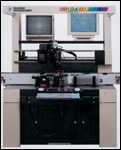
Laser Diode Attach System
The LDA assembly cell packages indium phosphide laser diode assemblies onto carriers and attaches them inside an optoelectronic package. A void-free eutectic solder interface is critical for the thermal and electronic connections needed to generate stable transmission of laser light. A pulse-heat system drives a eutectic hot-bar heater to generate the eutectic solder interface. A programmable closed-loop system tightly controls the reflow process and maintains a final placement accuracy of 5 microns. A preheated cover gas prevents oxidation. For more information about laser diode attach assembly cells, call Palomar Technologies at 760-931-3600, visitwww.palomartechnologies.comor reply 32.
Fiber Prep System
A fiber prep system automates slow, costly, labor-intensive assembly processes. It automatically processes optical fiber from a reel of raw fiber to a fully processed fiber with a ferrule attached in a containment package ready for the next process. The machine is part of a full line of modular systems that fully automate the processes of fiber handling and preparation, fiber-to-fiber attachment, fiber-to-device attachment, inspection and testing.
For more information about fiber optic automation equipment, call kSARIA Corp. at 978-933-0000, visit www.ksaria.com or reply 33.
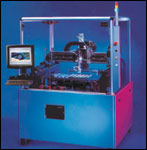
Automated Test System
The Optium automated filter test and sort system quickly inspects and classifies thin-film filters, enabling high-volume, high-yield manufacturing. An automatic gantry handling system moves and tests up to 500 DWDM filters per hour. Wavelength and signal quality criteria are measured using an optical multimeter and tunable laser diode. The filters are then placed in bins based on these criteria, designating filters for particular grades and applications.
For more information about automated filter testing systems, call Veeco Metrology Group at 520-741-1044, visit www.veeco.com or reply 34.
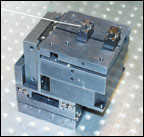
Fiber Alignment Stage
The FAST 6 fiber positioning stage is a six-axis, production-grade system. Modular X, Y, Z, pitch, roll and yaw axes allow user-selectable configurations. The linear axes feature nanometer-level resolution, yet have the longer travel required for load and unload operations. This eliminates the need for coarse and fine positioners or a manual stage. Compact rotary design provides a selectable pivot-point outside the envelope of the stage.
For more information about six-axis fiber alignment stages, call Axsys Technologies Inc. at 412-967-4000, visit www.axsys.com or reply 35.
Active Approach Streamlines Assembly
One breakthrough product generating some buzz at this year's Optical Fiber Conference (OFC) was active fiber technology. KVH Industries Inc. (Middletown, RI) spent several years developing a process that eliminates the need for pigtailing, a time-consuming fiber optic assembly process.Using a process dubbed ActiveFiber, the company creates optical networking components directly within strands of optical fiber. The technology uses D-shaped optical fiber--it features a flat side, as opposed to traditional O-shaped fiber--that makes it possible to embed a component in the core of the fiber.
A section of the core of the fiber is removed and replaced with an electro-optic polymer. The polymer has virtually the same optical characteristics as the core itself, which allows light to pass from the core to the polymer and back with little or no loss. An electrode is inserted into a groove on the opposite side of the fiber from the flat portion of the D.
In traditional applications, data is encoded onto light by transferring the light from the fiber to a planar optic chip, where modulation occurs, and then back to the fiber. These systems rely on gluing or pigtailing chips made of lithium niobate or other materials to individual fiber strands.
"This is expensive and has high loss in terms of both manufacturing yield and light energy," claims Martin Kits van Heyningen, president and CEO of KVH. "ActiveFiber technology eliminates the need to pigtail fibers to chips by bypassing the planar optical chip altogether. It offers an entirely new platform for manufacturing components."
ActiveFiber, which van Heyningen also calls "photonic fiber," allows users to build optical components no larger than the width of the fiber itself. The first product assembled with the new technology is a 40 gigabit per second all-optical modulator. Because the optical signal never leaves the fiber, insertion loss of the modulator is reduced.
